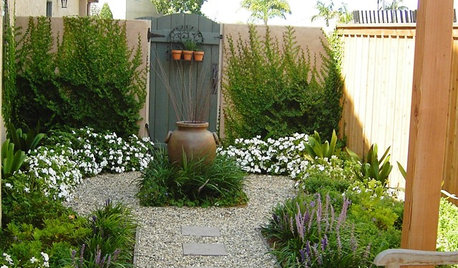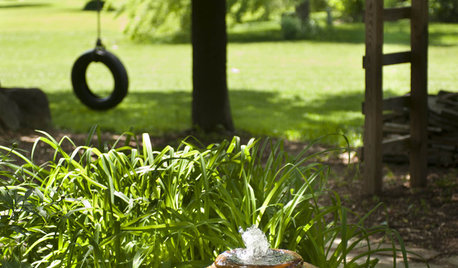Azaleas and Armallaria Fungus
jimtex3000
16 years ago
Related Stories

GARDENING GUIDESCommon Myths That May Be Hurting Your Garden
Discover the truth about fertilizer, soil, staking and more to keep your plants healthy and happy
Full Story
CONTAINER GARDENS7 Deer-Resistant Flowers for Your Summer Containers
Grow these as protection for edibles or just for their colorful beauty — deer might not like them, but everyone else will
Full Story
GARDENING GUIDESWhat's Wrong With My Plant? Leaves Often Hold the Clues
Learn how to identify common plant ailments by reading their leaves
Full Story
GARDENING GUIDESTop 12 Summer-Blooming Perennials for Deer-Resistant Drama
Can you have garden color, fragrance and exciting foliage with hungry deer afoot? These beauties say yes
Full Story
GARDENING GUIDESThe Art of Green Mulch
You can design a natural garden that doesn’t rely on covering your soil with wood and bark mulch
Full Story
GARDENING GUIDESWhat Kind of Roses Should You Grow?
Want to add the beauty of roses to your garden? Find out which ones, from old-fashioned to modern, are right for you
Full Story
GARDENING GUIDESHow to Turn a Side Yard Into a Glorious Garden Room
With just 8 feet or so, you can turn a plain side yard into a garden that lets you get carried away
Full Story
GARDENING AND LANDSCAPINGHow to Give Your Garden More Soul
Feel more at home in your garden by giving it deep, personal meaning
Full Story





rhodyman
Embothrium
Related Professionals
Bridgetown Landscape Architects & Landscape Designers · Ashburn Landscape Architects & Landscape Designers · Forest Acres Landscape Architects & Landscape Designers · Lowell Landscape Architects & Landscape Designers · Middle Island Landscape Architects & Landscape Designers · Berkeley Heights Landscape Contractors · Brandon Landscape Contractors · Cupertino Landscape Contractors · Flagstaff Landscape Contractors · Harvey Landscape Contractors · Haverhill Landscape Contractors · Santa Maria Landscape Contractors · Secaucus Landscape Contractors · Chicago Ridge Landscape Contractors · Raytown Landscape Contractorsrhodyman
ces1